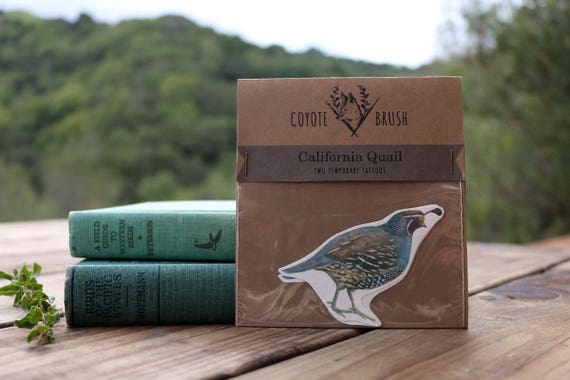Three beaver stories you don’t see every day…from places you truly expect to know better. The first is from Maine where a man believes he saw castoroides in person. Yes, really. He doesn’t want to give the location to make sure no people want go hunting for him.
Maine Man Claims to Have Witnessed Giant Beaver
A man from Maine claims to have seen a gigantic beaver. His estimations of size were about 14 feet long and weighing over 350 pounds. The man didn’t want to give away the exact location, for fear someone would try to harm the giant rodent.
“It was about 30 years ago,” he told Crypto Crew researcher Thomas Marcum. “It was a very general geographic area,” he added.
The anonymous eyewitness says he doesn’t want to give too much information about the area of the alleged sighting in order to protect this “rare animal” from “unwanted” human activity.
The man believes the rodent was about 14 feet long with an estimated weight of 350 pounds. It is believed that giant beavers, also known as Castoroides, went extinct about 10,000 years ago.
You saw a giant beaver 30 years ago? That’s nothing, a mere 47 years ago I could fly down stairs! I carefully explained to my disbelieving sister that I could only do it when no one was watching, because mysteries must be protected you know. Which I think makes my story more believable. To be fair, people were certain the ivory billed woodpecker was extinct until someone found one lurking in the back woods. I guess it’s theoretically possible castorides could be hiding in Maine.
Well, maybe not Maine.
Onto Montana where a wastewater staffer who has been told to protect the precious levys by killing beavers. A lot of beavers.
Pat Brook has nothing against beavers, but Hurricane Katrina forced his hand
Up until six years ago, though, Brook says, he’d never given beaver a second thought.
“Why would I?”
The answer is Hurricane Katrina. After New Orleans’ levees failed in 2005, FEMA and the U.S. Army Corps of Engineers began reevaluating other levees across the country, identifying deficiencies and tasking local officials with fixing them. When Missoula’s time came in 2011, the feds found that beavers were burrowing into a portion of the levee stretching from California Street to Russell. Their directive: Get rid of the beavers. And so, over the past six years, Brook has trapped 21 beavers near the California Street footbridge with the help of Dave Wallace, a Kila-based private contractor who specializes in wildlife control and removal.
“Let’s face it, you’re right on a primary corridor there,” Wallace says. “Basically, trapping is just preventative maintenance.”
Even so, Brook hates to call what they do trapping. It’s a practice he doesn’t support. “I mean, what’s the word I’m looking for? Barbaric?” From day one, he’s bucked the advice he says he received from Montana Fish, Wildlife and Parks to simply kill the critters. Instead, he’s insisted on releasing the captured beavers at either Kelly Island or Fort Missoula, the two sites that FWP, which issues his permits, instructed him to use for relocation. Keeping the beavers alive carries an additional $50-per-beaver charge, and Wallace says Missoula is “the only place [in the state] where that’s carried out.” Brook sees it as money well spent.
 “It sucks, but I gotta do it,” he says. “There’s a reason I’m here doing it, but I’d rather leave them alone.” According to Brook, the city’s bill for beaver relocation since 2011 totals $15,023.03.
“It sucks, but I gotta do it,” he says. “There’s a reason I’m here doing it, but I’d rather leave them alone.” According to Brook, the city’s bill for beaver relocation since 2011 totals $15,023.03.
City officials haven’t exactly been keen to discuss their approach to the beaver problem, fearful of how the trapping might play with the public. In fact, Brook found himself at the center of a dust-up in early April after two women confronted Wallace while he was setting cages. Brook says the situation escalated rapidly, drawing in both Missoula police and FWP.
The April incident has made increased public awareness inevitable. So Brook is now crafting a new plan, one that calls for installing large beaver-resistant rocks, or rip-rap, along the threatened stretch of levee. The project will have “a hefty price-tag,” he says, and would have to get the OK not just from city administrators, but from the feds as well.
I don’t know about you, but I’m still scratching my head about this article even though there not a word I disagree with. The waterway would be full of beavers using it as a freeway on their way to disperse, and killing every single one and throwing away the skin isn’t ‘trapping’ by any stretch of the word.
But the odds of him getting approval for the rip rap plan are pretty slim. Just like the odds of relocated beavers dumped in a neighboring lake surviving are also pretty slim. The army corps of Engineers were always crazy about their levies, and since Katrina they’ve become downright levy nazi’s. Remember a couple years back when they told California that if vegetation was left standing on a levy it wouldn’t be treated as their responsibility in a flood?
Sure, more erosion. That’s what levy’s need.
Well I wish Mr. Brooks all the luck in the world on his quest, and wrote him some advice about cost saving arguments to wield. In the meantime we should just all appreciate the fact that there is at least ONE wastewater operator in Montana that thinks endless depredation of beavers is cruel and pointless, and that’s something.
Finally, CBC radio is fondly remembering one of their most famous stories today. Apparently this story was listened to and shared more than any other. The narrator is a mild-mannered canadian man who apparently wished the beaver no harm, and holds no grudges. I found the whole thing grizzly in the extreme, but I was somewhat touched by his comments at the end. Listen if you dare.



 The goal of the exhibition is to recognize the aesthetic and ecological significance our state animal plays in the creation and maintenance of wetland habitats. Beavers, though woefully misunderstood, actually create and sustain wetlands that aid in resuscitating wetland and riparian stream habitats. They play a central role in shaping our
The goal of the exhibition is to recognize the aesthetic and ecological significance our state animal plays in the creation and maintenance of wetland habitats. Beavers, though woefully misunderstood, actually create and sustain wetlands that aid in resuscitating wetland and riparian stream habitats. They play a central role in shaping our  future as we prepare for transformations that a warming and changing climate may bring. The sponsoring organizations are working together to learn more about how we can work with beaver to conserve and restore natural systems.
future as we prepare for transformations that a warming and changing climate may bring. The sponsoring organizations are working together to learn more about how we can work with beaver to conserve and restore natural systems.





 was delighted to find this description on the
was delighted to find this description on the 







 cean First website
cean First website







































